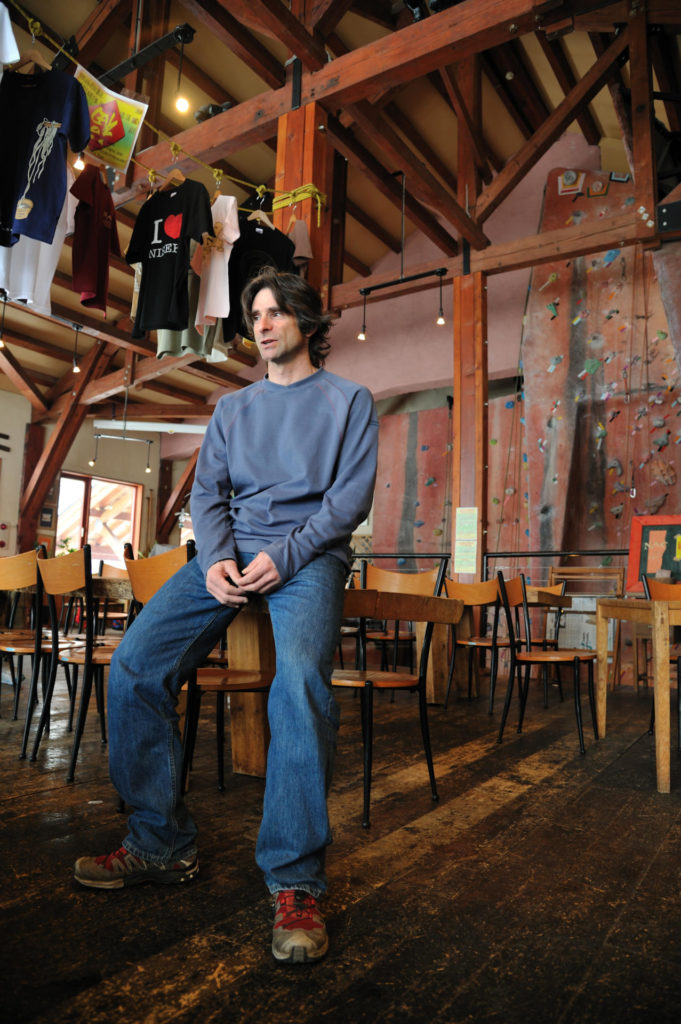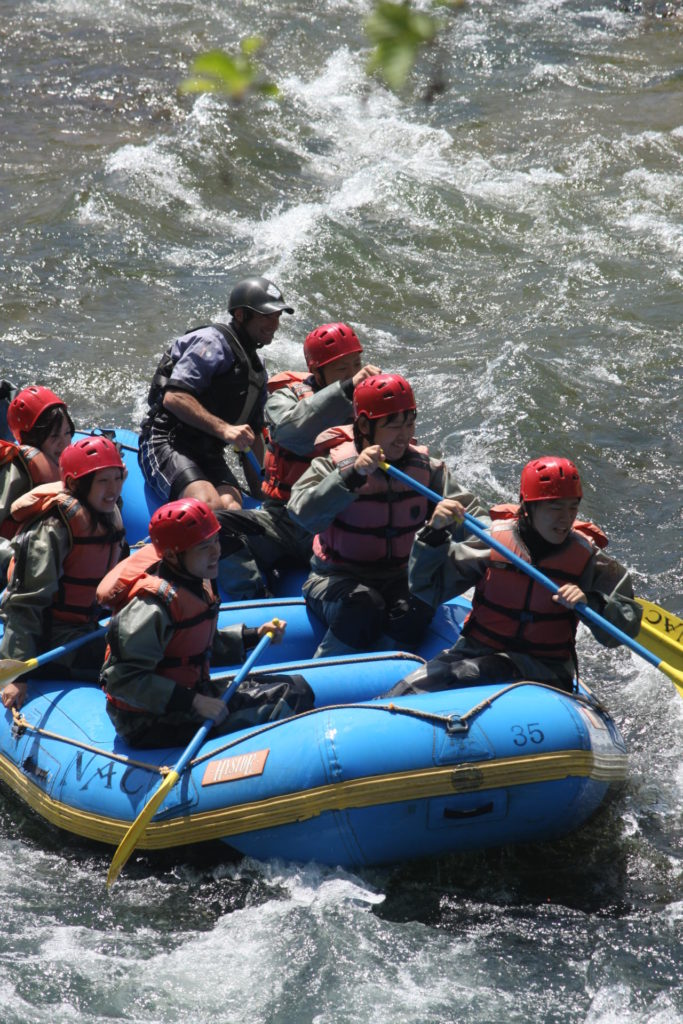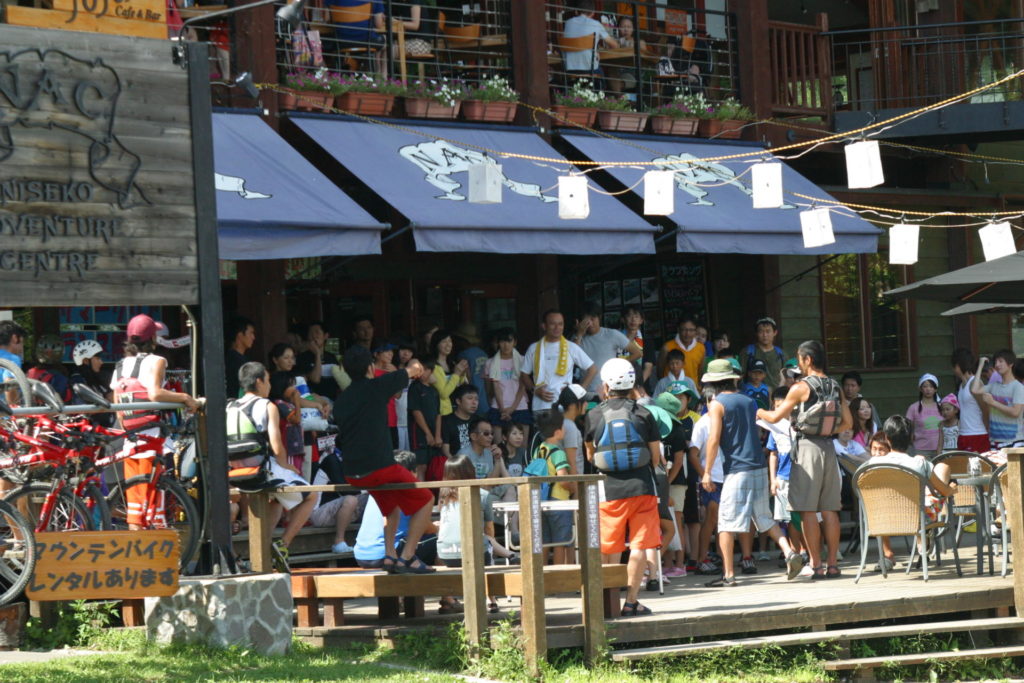
Name: Ross Findlay
Nationality: Australian
Occupation: Owner, Niseko Adventure Centre
Location: Niseko, Japan
Web: www.nac-web.com
1. When did you first come to Japan and what brought you here?
I first came to Japan to work as a ski instructor. Australia was in a recession, and Japan was in its bubble era. I had just graduated from university, studying sports, and it was a very hard time to find jobs relating to sports in Australia. I thought coming to Japan, finding something Japanese, might help me get employment in the future in Australia. My first job in Japan ended up being with the Snow Dolphin Ski School at Teine Highland in Sapporo. The ski school head is the famous adventure skier Yoichiro Miura. The most important something Japanese turned to be my beautiful wife and super skier Yoko. While she did not help me get a job in Australia, we have definitely achieved a lot together in Japan.
2. How did you end up in Niseko?
While working at Teine, my fellow instructors invited me to Niseko on our holiday. I went a few times with them and enjoyed the skiing and the feel of Niseko so much, I also came out a few times by myself. By the end of two seasons in Teine, I decided Niseko was where I wanted to be (Yoko, who was in Niseko, could have been a big factor in that decision).
3. What was Niseko like back then?
Niseko, around 1990, was in the peak of the ski bubble. It was tremendously crowded. Waiting 20 to 30 minutes for a lift was the norm. Accommodation back then was one of the many pensions that crowded the Hirafu area. Mogul skiing was very popular, and many members of the Japanese team had chosen Niseko as their home resort. As always, Niseko had a large group of local skiers. I think this is what makes Niseko so special. There has always been a bunch of young people to ski hard with, party hard with and work (as little as necessary) with.
Niseko has also always had a great sense of lifestyle to it. But the most important and best thing about Niseko in 1990 was hardly anyone skied Niseko’s endless powder. That same group of locals would be skiing untracked powder in the morning and afternoon. Because of the lack of people skiing the powder, the snow would gradually get deeper and deeper. I can remember many an overhead day.
4. How has Niseko changed over the last two decades?
I have seen Niseko go from a thriving resort in the early 1990s to a resort with a lot of people trying hard just to survive by the mid ’90s. The end of the Japanese ski bubble saw a lot of pensions just not getting enough customers to cover their loans. By early 2000 some had already gone under. Then in the 2001-2002 ski season, we saw an influx of foreign skiers. This was an entirely new and unheard-of market for a Japanese ski resort. These international customers would want to stay for a week or even two. This was also new for the pensions, hotels and the resort. A lot of customers wanted to stay in condominium-type accommodations. So Niseko changed from being a pension/hotel-based ski resort to a condominium/hotel resort. Hirafu saw a great increase in places to eat and drink and shop. The resort infrastructure in Niseko is now approaching the international standard.
5. When did you start the Niseko Adventure Centre and what was the inspiration behind starting your own company in Japan?
By the mid-‘90s Niseko was economically desperate. Ski customers had dropped right off, and there was not much summer business. I just thought unless there were things for people to do in summer, no one would come to Niseko. Since I had been involved with kayaking for a few years, I came up with the idea of making a rafting company (laughing… “lifting” …rafting was a new word in most Japanese people’s vocabulary). The idea was anyone would be able to enjoy the most exciting parts of the river. It would also create jobs for all the young people who came and wanted to stay year-round in Niseko.

Also, if I created something for people to do for half a day, such as rafting, then others could find other options for these people. This would lead to an infrastructure that would make Niseko a resort that was fun all year, no matter how long you stayed or how many times you went there. I also wanted NAC to be an example of what could be done as an outdoor center. I think we achieved a whole new vision for the Niseko area, this has been built on, and has helped lead Niseko to the international year-round resort it is today.

6. What have been some of the challenges of running a company in a foreign country or in Japan in particular?
Probably the same as anywhere… crying over taxes and wages, rejoicing over profits. And accepting all people are different.
7. How has the business environment changed in Niseko over the past 20 years?
The biggest changes have been the increase of the international market. This means a necessity to have English and, if possible, Chinese-speaking staff. The change in accommodation has seen a shift away from pensions to hotels and condominium management companies. People staying for a longer time has meant we are able to create new ways to service people who are going to be here for a week or so. Increasing conference (MICE) market has meant creating original adventures for these special groups. It has definitively made it a lot more interesting.
Someone told me the other day Hirafu is like an I-Phone and all the people and businesses here are the apps. I think this is a very good business model, and it is what makes Hirafu so interesting and fun for all.
8. Do you think people’s attitudes about travel and the outdoors in Japan have changed in Hokkaido or in Japan over the last decade?
Not really. Rafting has become more mainstream, with school groups and families wanting to partake. Perhaps I am living in a sheltered area, where most of the locals love the outdoors. I have still yet to see a change in the management of National Parks, forested areas and rivers in respect to outdoor sports usage.
9. What would you like to see happen in Niseko and/or with NAC over the next 10 years?
Niseko is a fantastic place with the potential to become Japan and Asia’s first year-round, outdoor sports and lifestyle resort area. The area is already heading in this direction, and it is exciting to be in an area with so much change and progress.
For NAC, I would like to see it grow to supply more adventures in more areas of Hokkaido. Also, to be able to offer more year-round employment to young people.

10. What do you like to do for fun and to relax when you are not running NAC?
At the moment, while not relaxing, but sort of fun, I am making a house for our family. On the family side, while not relaxing, but definitely fun, I enjoy watching our four boys grow up. Personally, definitely not relaxing, but fun in a suffering sort of way, I have enjoyed bicycle road racing for the last five years. What do I do to relax…sleep.






